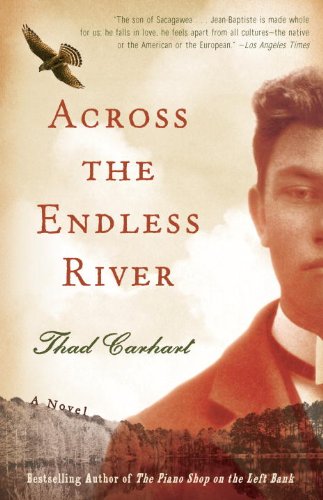Across the Endless River
The youngest member of the Lewis and Clark Expedition, Jean-Baptiste Charbonneau became a ward of William Clark, then a trapper and a guide to many naturalists, explorers and adventurers longing for their view of the New World wilderness. When eighteen he met the Duke Paul of Württemberg, who invited the young man to return to Europe in his company. Across the Endless River speculates on what may have transpired in those years (1823-1829) before the son of Sacagawea returned to the American frontier.
Baptiste travels with his benefactor throughout Europe as Duke Paul struggles with managing his collection of animals. He struggles in his family’s expectations, but manages a short-lived beneficial marriage and heir. Baptiste remains an outsider, despite his two love affairs and acquiring languages and understanding of a world in which he is sometimes treated as a specimen himself, and other times passes as a gentleman because he dresses and speaks as one.
The life of Sacagawea’s son continues to captivate writers, from Susan M. Colby’s well-researched and through biography Sacagawea’s Child to fictionalized accounts that range from Colin Sargent’s brutalized victim in Museum of Human Beings, to Larry McMurtry’s liberties that cut his life short in By Sorrow’s River. Carhart’s effort comes to life briefly with exciting descriptions of a buffalo hunt or a performance by Schubert, some good conversation of Old and New World differences and carefully rendered details, but mostly the novel remains soulless. The enigmatic heart of Baptiste Charbonneau remains elusive, due to Across the Endless River’s passive, slow-moving narrative, stilted dialogue, and constant point of view shifts.










